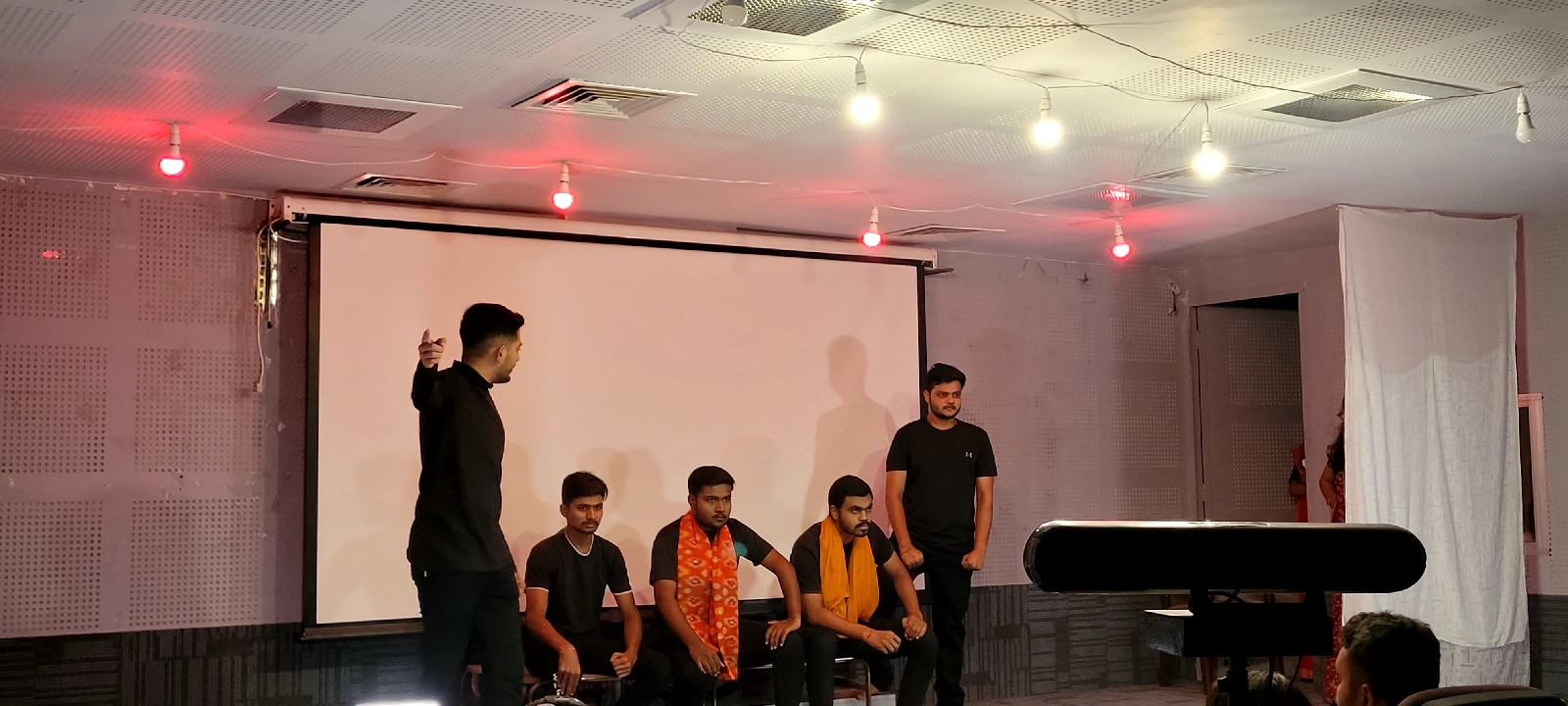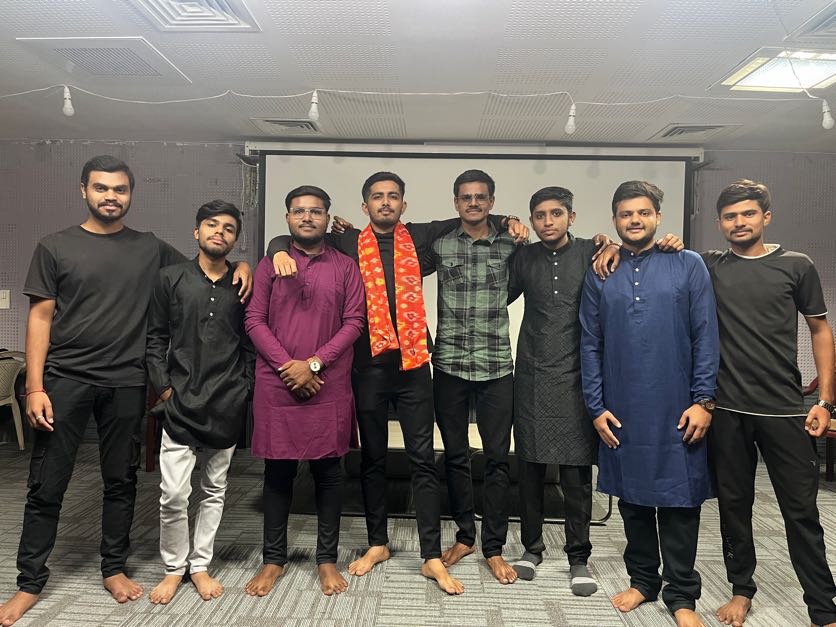"Final Solutions" By Mahesh Dattani
"Final Solution" by Mahesh Dattani is an intriguing play to read. The blog includes a series of questions and answers provided by Prakruti Ma'am to assess comprehension. The answers presented in the blog reflect my understanding and offer personal opinions on the play.
Introduction:
"Final Solution" is a thought-provoking play written by Mahesh Dattani. It's his fifth play, created in response to the unrest in Mumbai. The play focuses on the conflict between Muslims and Hindus, showing how politicians use religion to manipulate people, who end up suffering as a result. Dattani explores the theme of communalism, highlighting the deep religious divisions in society and how they lead to discrimination and conflict.
About Mahesh Dattani:
Mahesh Dattani, born in 1958, is one of India’s most respected playwrights. His plays are known for addressing tough issues that society often ignores or avoids. Dattani has made a significant impact on Indian-English drama, using his work to question societal norms. He once said, "The purpose of drama, in my opinion, is not just to show what’s wrong in society, but to act like a distorted mirror, reflecting the strange and uncomfortable truths behind what we consider normal. It may be ugly, but it can also be humorous."
How does Mahesh Dattani manipulate time and space within the dramatic framework of Final Solutions to create meaning? Explore the interplay of these elements with specific reference to the stagecraft techniques employed by the playwright.
From the start, Mahesh Dattani carefully uses stagecraft to guide how the characters move and interact. He even suggests using a ramp for the chorus, which represents the outside world and the shifting identities of the masses as both Hindu and Muslim. The main character, Hardika, revisits the past through her diary, with Dattani cleverly blending past and present.
As a young woman, Daksha (who later becomes Hardika) had a painful experience with Zarin and her family. In the present, Hardika connects this old hurt to the arrival of two Muslim boys. Her father’s death is closely tied to these bitter memories, and whenever something in the present reminds her of the past, she is immediately pulled back to that time. The boys’ arrival brings back the painful memories of Zarin’s family.
Hardika’s anger flares up when she tells the boys to leave, fueled by memories of the abuse she faced from her in-laws. Dattani captures these shifts in time by positioning Daksha in the background and Hardika in the foreground, showing the link between her past and present. Noor Jahan’s songs tie Daksha and Hardika together, while Ramnik uses old papers to connect with the past. The ramp represents the outside world, and the house acts as a small version of society, where open-minded characters like Smita, Ramnik, and Bobby clash with more prejudiced ones like Javed, Hardika, and Aruna.
Examine the complexity of guilt experienced by the characters in the play. How does this emotion shape their actions and relationships?
Guilt is a central theme in the play, with Ramnik being the main character who embodies it. His actions, such as giving shelter to Bobby and Javed, offering Javed a job, and providing them with food, are all motivated by his deep sense of guilt. While Ramnik claims to be liberal, his actions suggest that his so-called liberalism is actually driven by guilt.
On the other hand, Hardika is initially unaware of her in-laws' true intentions toward Zarin's family. The guilt of her in-laws is reflected in their attempts to offer help. Similarly, Smita feels guilty about following traditional practices like puja, fasting, and purification rituals. She does these things to keep her mother happy, but this guilt over doing something she doesn’t fully believe in becomes clear when she finally pushes back.
Hardika’s guilt comes to a head when Ramnik reveals that he was involved in burning down the Muslim family’s shop and then buying it. Her final question, "When will they come back?" and Ramnik's reply, "If we call, they will," are filled with guilt. Javed’s actions, including his attacks on the Hindu rath yatra and the pujari, are also driven by guilt. His guilt is exposed in his weaker moments, and the conflict between Ramnik and Javed is key to highlighting the theme of guilt.
Their arguments reveal each other’s weaknesses, showing a deeper issue common in many people, especially in India. The country is marked by deeply ingrained prejudices that fuel communal hatred, creating a society where even a small religious incident can expose the superficial nature of those who claim to be secular.
Reflect on your journey through Final Solutions as a student of theatre. How did the process of studying, rehearsing, and performing this play shape your understanding and appreciation of theatre?
Reflecting on my journey with "Final Solutions" as a theatre student, performing as part of the chorus was a real eye-opener. Studying the play made me realize how deeply it tackles themes like communalism and guilt. It was amazing to see how these themes come alive through the characters and the structure of the play.
During rehearsals, being in the chorus helped me understand the importance of representing the crowd and showing different sides of the conflict. Our role was to reflect the shifting identities between Hindu and Muslim, which made me appreciate how the chorus can add to the play's emotional and thematic depth.
When it came to performing, I saw how stagecraft and direction shape the audience's experience. As part of the chorus, I felt how our collective presence could influence how people understood the characters' struggles and guilt.
Overall, this experience really broadened my view of theatre. It showed me how powerful it can be for exploring social issues and highlighted the importance of every part of a performance, from individual roles to the chorus, in making the play impactful.
Some snapshots of the Performance:
To conclude, "Final Solutions" shows that dealing with personal issues and overcoming deep-seated biases is crucial for real resolution. The play highlights how the characters struggle with guilt, identity, and making peace. Its open-ended ending reflects how hard it is to achieve lasting harmony and understanding in a divided society.









Comments
Post a Comment